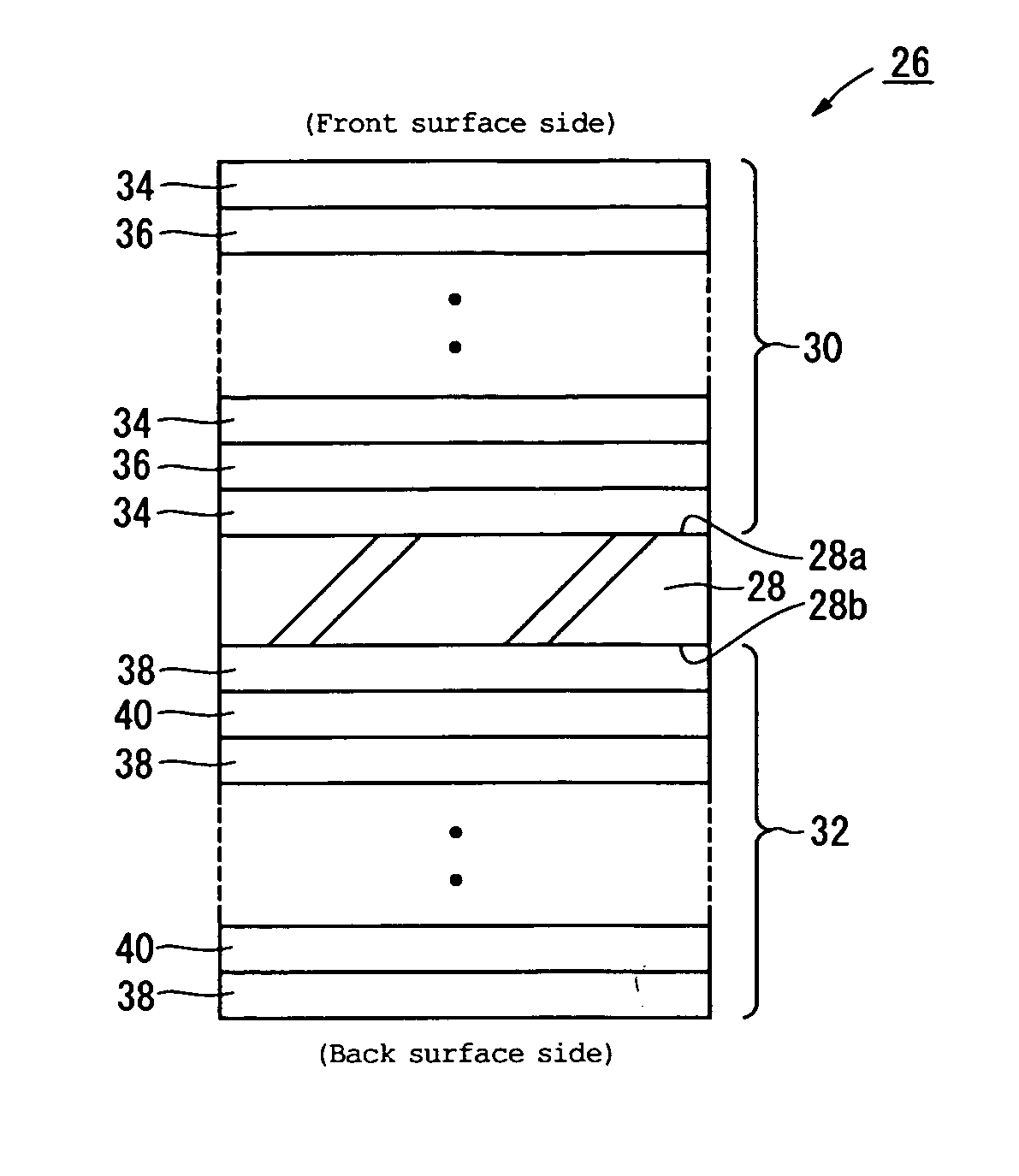Dielectric multilayer filter
a multi-layer filter and dichroic filter technology, applied in the field of dielectric multi-layer filters, can solve the problems of narrower reflection band, red-reflective dichroic filter cannot have the required reflection band, ir cut filter or red-reflective filter cannot have the effect of reducing incident angle dependency
- Summary
- Abstract
- Description
- Claims
- Application Information
AI Technical Summary
Benefits of technology
Problems solved by technology
Method used
Image
Examples
examples
[0071] Examples (1) to (4) in which the dielectric multilayer filter 26 shown in FIG. 1 is configured as an IR cut filter and an example (5) in which the dielectric multilayer filter 26 is configured as a red-reflective dichroic filter will be described. In FIGS. 7 to 30 showing spectral transmittance characteristics for the examples (1) to (3) (all of which are determined by simulation), characteristics A to D represent the transmittances described below. The values of the refractive index and the attenuation coefficient for the design in each example are those with respect to a design wavelength (reference wavelength) λo in the example.
[0072] Characteristic A: transmittance for an incident angle of 0 degrees
[0073] Characteristic B: transmittance of p-polarized light for an incident angle of 25 degrees
[0074] Characteristic C: transmittance of s-polarized light for an incident angle of 25 degrees
[0075] Characteristic D: average transmittance of p-polarized light and s-polarized ...
example
(3)-6
[0227] The IR cut filter 26 was designed using the first dielectric multilayer film 30 and the second dielectric multilayer film 32 according to the following examples.
[0228] First dielectric multilayer film 30: example (1)-5 (average refractive index of the entire stack film=2.17)
[0229] Second dielectric multilayer film 32: example (2)-2 (average refractive index of the entire stack film=1.77)
[0230]FIG. 29 shows spectral transmittance characteristics of the IR cut filter 26 of this design. FIG. 30 is an enlarged view showing the spectral transmittance characteristics within a band of 620 to 690 nm in FIG. 29. According to this design, the following characteristics were obtained.
[0231] High-reflectance band for an incident-angle of 0 degrees: 677.2 to 1011.6 nm
[0232] High-reflectance bandwidth for an incident-angle of 0 degrees: 334.4 nm
[0233] Shift of the half-value wavelength EL at the shorter-wavelength-side edge of the reflection band between the case where the incide...
PUM
 Login to View More
Login to View More Abstract
Description
Claims
Application Information
 Login to View More
Login to View More - R&D
- Intellectual Property
- Life Sciences
- Materials
- Tech Scout
- Unparalleled Data Quality
- Higher Quality Content
- 60% Fewer Hallucinations
Browse by: Latest US Patents, China's latest patents, Technical Efficacy Thesaurus, Application Domain, Technology Topic, Popular Technical Reports.
© 2025 PatSnap. All rights reserved.Legal|Privacy policy|Modern Slavery Act Transparency Statement|Sitemap|About US| Contact US: help@patsnap.com



